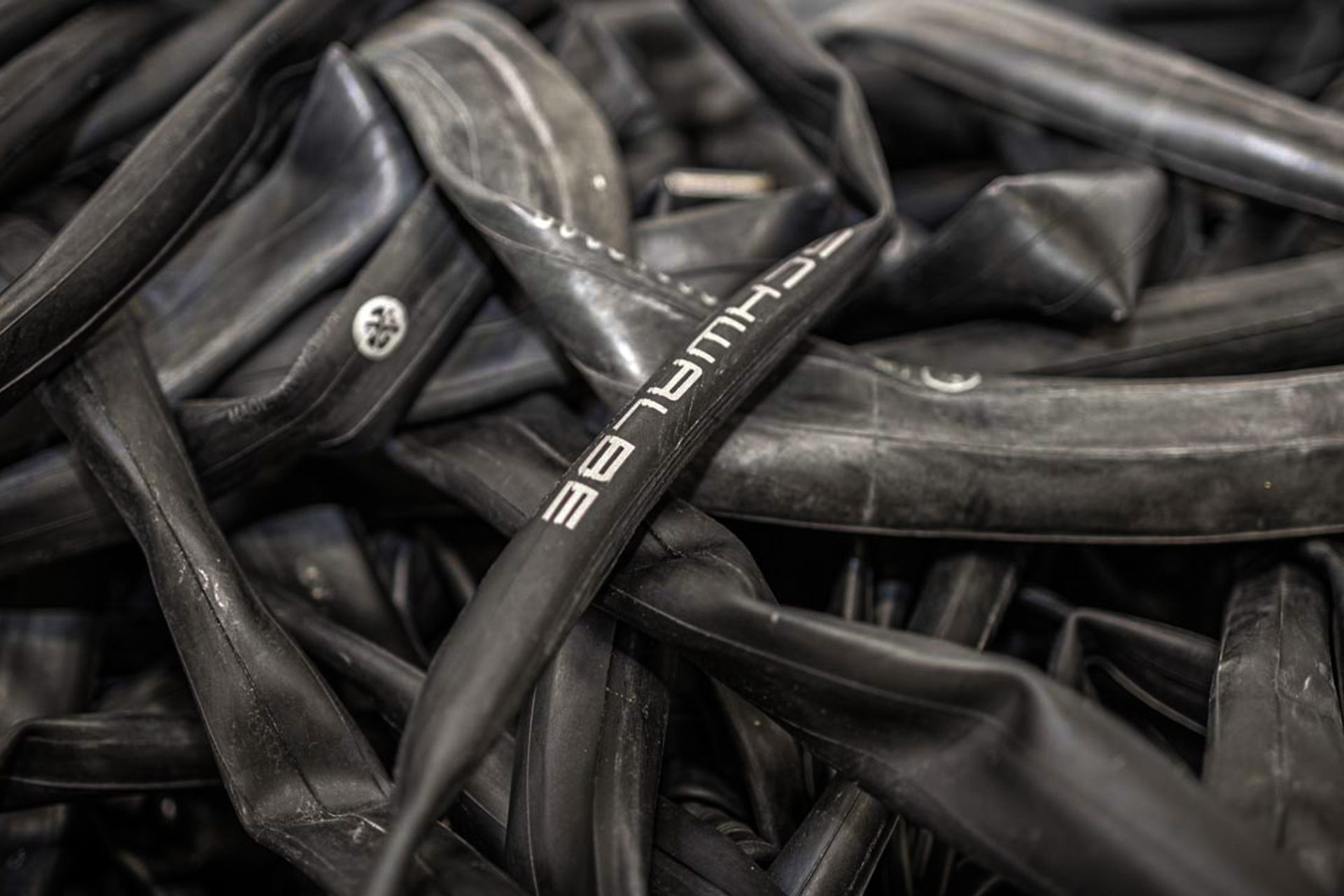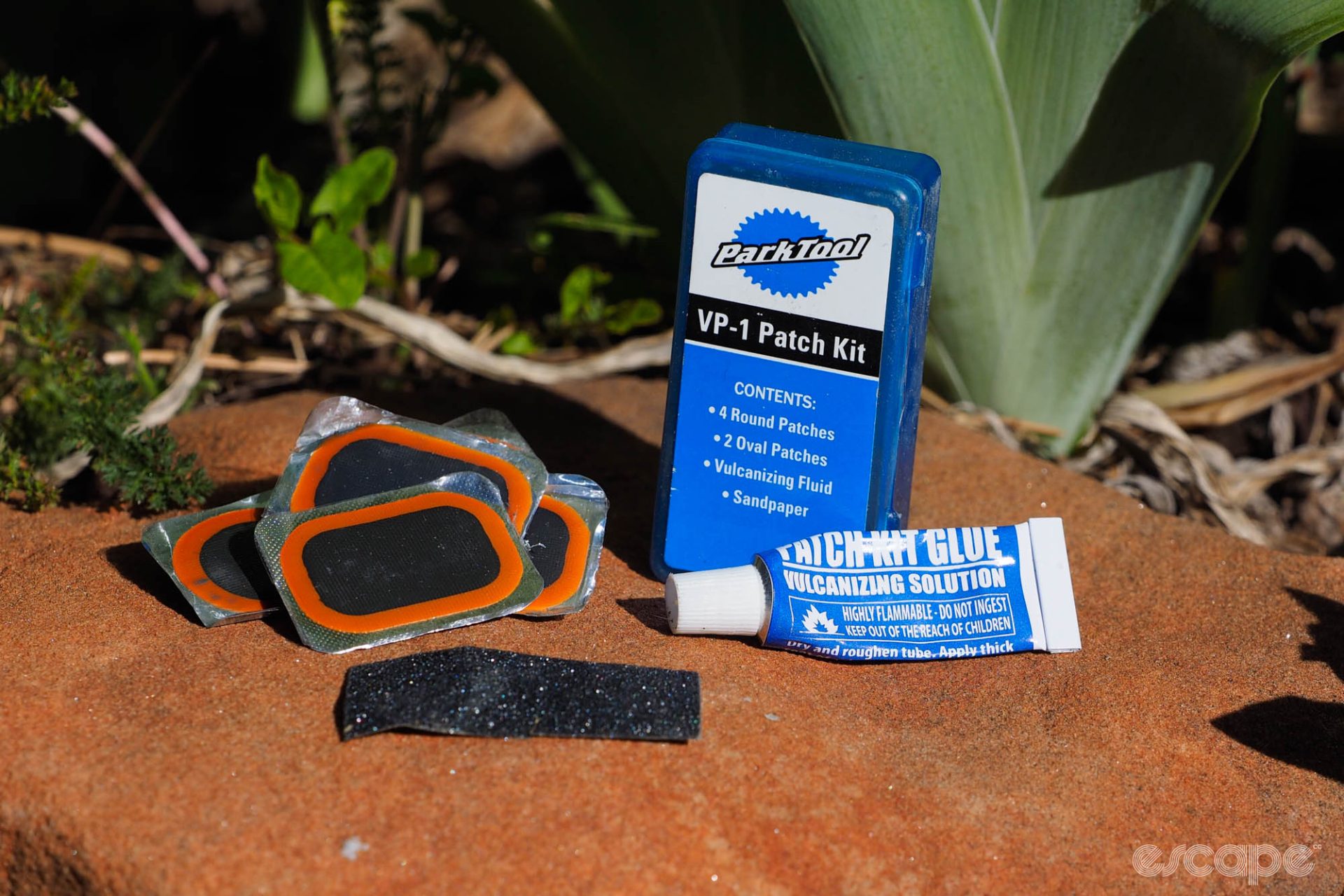A coworker way back in my shop mechanic days dubbed me the “Angry Asian”, and for good reason: I was definitely mad at the world in my youth. I’m still angry – and definitely still Asian – but I now reserve that anger for the some of the things I occasionally see in the bike world. Welcome to ‘Anger Management’.
Among major bicycle tire and inner tube companies, Schwalbe has been leading the way with inner tube recycling, reportedly saving more than nine million of them from going into the landfill through the Tube-to-Tube program it’s operated in Europe for the past eight years. According to Schwalbe, the materials recovered from these tubes is used to help create new inner tubes, to the point where each one you now see on the shelf reportedly contains about 20% recycled content. Using these recycled materials also supposedly reduces energy consumption by about 80% compared to using virgin rubber.
Starting June 1, Schwalbe will now expand the program to the United States, where you’ll soon be able to drop off your old inner tubes at “select dealers” – a not-insignificant endeavor given the company estimates that nearly 10 million inner tubes are chucked into stateside trash bins each year. Schwalbe will then pay for the dealer to ship off those inner tubes, where they’ll then undergo the same recycling process as in Europe.
Once the program is fully up to speed, Schwalbe hopes to have hundreds of drop-off locations nationwide.

Let me be clear that I wholeheartedly believe Schwalbe’s efforts are to be applauded here. It’s an ambitious program that represents a lot of time and effort invested, and the potential upsides are substantial. It saves a lot of material from landfills, you get rewarded with a feel-good moment by doing your part, and Schwalbe perhaps even saves a bit of money in the process (or maybe this even costs them money? I can’t say).
But for all the upsides, I can’t shake the feeling this still doesn’t quite send the right message.
For sure, some discarded inner tubes are just too old and too worn-out, to the point they’re no longer usable. Some will suffer from catastrophic blow-outs that turn them into little more than butyl scrap. Got a torn valve stem? Done. But the majority of those millions of tubes will only have small punctures in them that can be easily, cheaply, and reliably repaired.
I’ve heard many people say they don’t bother fixing inner tubes because the patches aren’t reliable and new tubes are cheap.
I disagree.

While there is unfortunately no shortage of bad patch kits (most of which are of the self-adhesive variety), a properly applied patch will last the life of the tube. And at least in theory, you can keep patching subsequent punctures until you’ve literally run out of room on the tube to apply them. Put bluntly, if you can’t get the patch to stick, you’ve either done it wrong or you’ve got a crap kit.
And let’s talk about cost.
Inner tubes are actually quite pricey these days. A standard butyl tube often costs about US$9. An ultralight butyl tube bumps that up to maybe US$15 or so. Want to get extra-fancy with latex or polyurethane? Go ahead and multiply that last number by two or more.

On the other hand, a standard Rema Tip Top patch kit (still my favorite) costs less than half that, and has enough patches to repair up to five butyl inner tubes – maybe fewer if the glue dries out before you’re used them all. You can always get more glue, though, and Rema even sells patches by themselves. But even if you’re only able to repair just one out of each kit, you still come out well ahead.
I get it. Some people can’t be bothered. Maybe you don’t get flats that often. Perhaps $20 here or there just isn’t that big a deal. And for sure, patching latex or polyurethane tubes is unfortunately still a little less reliable than I’d like. But just because you’re passing off your problem to someone else doesn’t make the problem go away. As much as I genuinely applaud Schwalbe for all of this – along with any other companies that are doing this sort of thing – what it ultimately will boil down to for participants is, “out of sight, out of mind”.

When I was a kid, it was a badge of honor to get tube patches right, to get those delicately feathered edges stuck down just so. For sure, there was a much stronger financial incentive to patching for me back then, but even more than three decades later – and with no shortage of new tubes at my disposal given my privileged position in the industry – I’m still fixing them.
It’s not because I’m cheap. It’s obviously not for any sort of performance advantage. And I sure as hell don’t have more free time than I used to. It’s just that when it’s so painfully easy and inexpensive to fix something, you should.
It’s just the right thing to do.
What did you think of this story?


